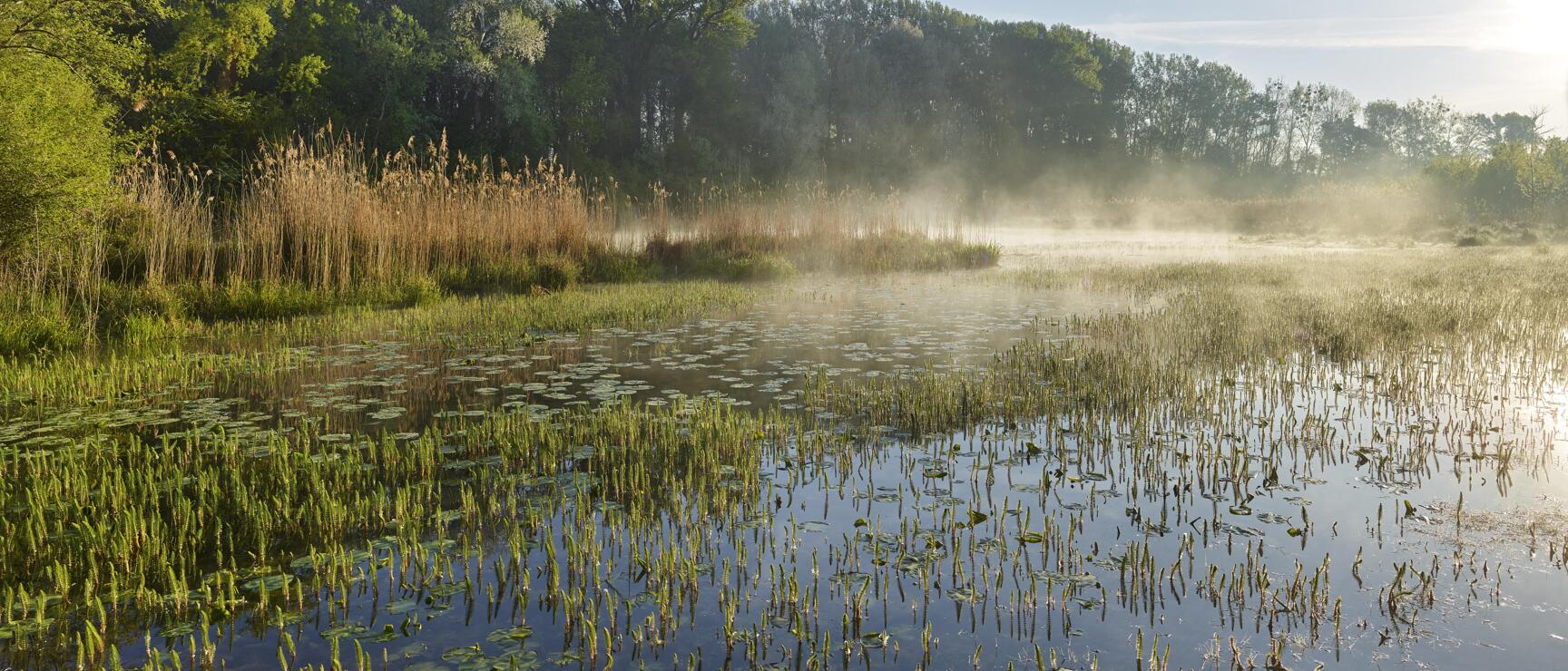
National Parks and Biosphere Reserves in Austria
Here, we are merely guests, invited to marvel
Austria is a wonderfully green country: Almost half of it is surface is covered in trees, with an increasing number of hardwood and mixed forests, providing perfect conditions for a thriving flora and fauna. To preserve the natural regions, Austria has put about 48% of its area under special protection. It’s a significant effort to sustainably safeguard Austria's unique landscapes, biodiversity, and the rejuvenating environments that people cherish.
In the national parks, the preservation of ecosystems according to strict criteria has top priority. Nature can flourish largely undisturbed. The nature parks reconcile nature and management by humans, who have often been shaping these cultural landscapes for centuries. The model regions of the biosphere parks also preserve the natural regions and cultural landscapes within the framework of the UNESCO programme. And a completely untouched natural landscape with rare plants and animals thrives in the wilderness area.
Protected nature in Austria
“When I’m birdwatching at Neusiedler See-Seewinkel National Park, I feel like I have arrived. Everything’s so quiet, and all I hear and see is nature’s fantastic spectacle.”
Elena Turac, Ranger at Burgenland's Neusiedler See-Seewinkel National Park
Austria's national parks
Sustainable outdoor-fun
Hohe Tauern National Park
The Hohe Tauern National Park spans regions in Tyrol, Carinthia, and the SalzburgerLand. This unique natural world is crisscrossed with numerous hiking trails—offering around 4,300 kilometres / 2672 miles of alpine paths. Mountain huts and snack stations provide convenient stops for extended tours.
The region is perfect for experiences that open your eyes and heart to the beauty of nature: whether in the Weissee Glacier World, by the Pasterze Glacier, or through the Leitenkammer Gorge. And the Krimml Waterfalls are undoubtedly one of the most famous natural wonders that leave you in awe.
How do you become a national park ranger?
They say people excel at what they love doing. Hermann Jansesberger, one of over 200 rangers in one of six national parks, is a prime example of this. Hermann is a true “nature enthusiast.” He knows every moss by name and can vividly recount the ancient history of any rock. Every beetle he encounters is worth a pause. So, how does one become a national park ranger?
A love for nature and enjoyment of working with people are essential for anyone looking to become a ranger. The roles vary from park to park but generally include guiding visitors and school groups, maintaining and monitoring educational trails and observation huts, giving talks, overseeing the area, and carrying out monitoring tasks.
Austria's Biosphere Reserves
Alle Sinne auf Empfang!
Warum erholt uns die Natur?
Das Wohlfühlpaket der Natur ist schlicht und selbstverständlich – und bewirkt dennoch großes Entspannungs-Kino für Körper und Geist: Saubere Luft, Sonnenwärme, das Grün von Wald und Wiesen sowie Licht.
Besonders gut können wir unsere Sinne auf Wiesen mit vielen verschiedenen Blumen und großer Biodiversität entfalten. Je artenreicher, desto besser für unser Wohlgefühl. Außerdem erdet uns die Natur. Denn Sinne und Seele sind am Schreibtisch nicht voll ausgenützt – der Mensch ist schließlich auf Natur ausgerichtet und nicht auf den Computer. Und am besten können wir uns in den Bergen und in alten Laubwäldern erholen. Denn die Bindung zu Holz und Bäumen ist evolutionstechnisch bei Menschen „einprogrammiert“.
Österreichs Naturparks
Klimaschutz-Info
Warum ist Biodiversität so wichtig für den Klimaschutz?
In einem intakten Ökosystem leben unzählige Arten von Mikroorganismen, Pilzen, Pflanzen und Tieren. All die Lebewesen und der Kreislauf, in dem sie sich befinden, brauchen einander und sind gegenseitig abgestimmt. Sie tragen als eigene Ökosysteme maßgeblich zu einem funktionierenden Klima bei und sorgen für frische Luft und sauberes Wasser. Ein gesunder Wald etwa filtert aus der Luft das Treibhausgas CO₂. Deshalb ist die Artenvielfalt für Menschen, Tiere und Pflanzen lebenswichtig.
Wird das Gleichgewicht der Organismen durch äußere Einflüsse gestört, kommt die intakte Biosphäre ins Wanken. Ein stabiles Klima braucht jedoch eine gesunde Tier- oder Pflanzenwelt. Österreich und seine engagierten Regionen sind sich der Verantwortung bewusst und setzen zahlreiche Maßnahmen, um die kostbaren Lebensräume in der Natur zu schützen und die Biodiversität zu stärken.